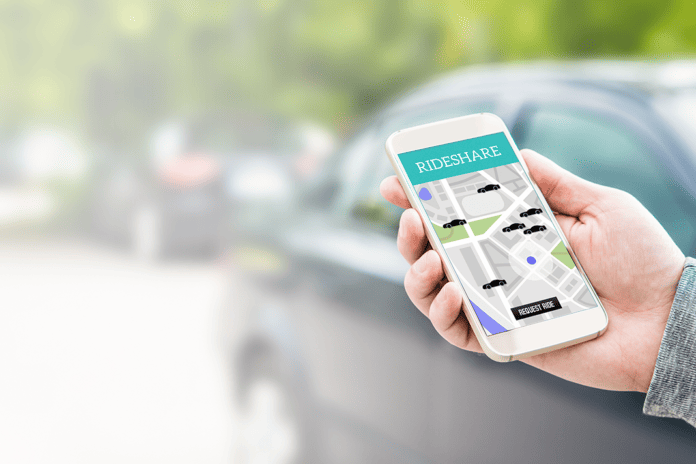Dental offices all experience a certain number of broken and missed appointments that can become a common source of frustration. Transportation issues have long been a concern in relation not only to lost production for dental providers but as a major barrier to access to care for many patients. According to federal government research, 3 million people a year do not receive care due to transportation issues3. Non-emergency medical transportation (NEMT) options vary from state to state, but healthcare providers agree that issues ranging from limited cost transparency to unreliable drivers sometimes add to the difficulty of getting patients to their medical and dental appointments. Now, technology and ride-sharing applications are stepping in to simplify scheduling patient transportation, decrease lost revenue, and improve access to care.
Early in March 2018, Uber unveiled Uber Health, a new extension of the popular ride-sharing application focused on non-emergency medical transportation. Uber recently completed a successful eight-month trial in which they partnered with 100 healthcare providers to test the program and are now expanding to the public1. Providers and staff may use a smart device with the application or a web-based dashboard to register for the service, schedule rides, and track usage. Rides may be scheduled within hours of an appointment or up to thirty days prior.
Providers receive a monthly bill for the service; there is no subscription fee or additional charges, only the cost of the rides are billed. Patients currently must have a mobile phone to receive a text, but Uber is working on a landline option for reminders5. Providers may want to pass on the trip charges as an additional fee to patients, but many may choose to absorb the cost into their operating budget. One insurer found that not only offering transportation but covering the cost helped patients keep more regular and preventative visits, which reduced emergency visits3.
Lyft, another well-known ride-sharing application, has been in NEMT for close to two years. Lyft Concierge has partnerships with several established transport and electronic health record companies. Nine out of ten US health systems and all 10 Medicaid transportation brokers use Lyft2. In fact, the company announced a new partnership with an electronic health record company the same day Uber Health was unveiled; that will extend their services to 7 million new patients, 2500 hospitals, and 180,000 physicians1.
Providers may use an app, but Lyft has also been incorporated into health software systems. Transportation may be scheduled up to a week before the patient’s appointment. Patients do not need a smartphone, the office can print future transportation information and hand it to the patient, or they may receive a text, email, mobile or landline call. Lyft also has the ability to use an application programming interface (API) in conjunction with patient electronic health records to search patient information, identify those who may need transportation services, and send them information about the service1. According to their website, 3.6 million patients a year miss appointments attributing to 150 billion dollars in healthcare costs. Lyft’s goal is to cut that number to half by 20204.
Uber being newer to non-emergency medical transport, the company is working out a few obstacles that Lyft has had time to navigate. Uber WAV (wheelchair accessible vans) is a pilot program currently in the trial stage to provide options for those patients with specific transportation needs6. Uber WAV drivers will complete a certification course with a 3rd party to help passengers in and out of the vans. As of now, Uber Health drivers can be driver registered with Uber, and due to HIPAA, drivers will not know if the rider is an Uber Health or Uber user5. Lyft has affiliations with established NEMT companies whose employees are HIPAA trained, will assist patients to and from the vehicles, and have CPR and first aid experience.
In time, ride-share companies could become a great option for dental offices looking to minimize broken and missed appointments. Incorporating free roundtrip rides for dental visits may even bring in new patients whose main obstacle is transportation. In the near future, scheduling transportation might be a normal part of setting up re-care visits. Dental software developers may not be far behind healthcare applications that incorporate ride scheduling. Ride shares in non-emergency medical transport are going to be an industry that can help patients keep appointments, reduce lost production for dental offices, and increase access to care in general.
SEE ALSO: Community Dental Clinics: Serving Those in Need
DON’T MISS: Getting Patients to Understand the Importance of Medical History
References
- Cava, M. D. (2018, March 06). Why Uber and Lyft want to take you to the hospital. Retrieved March 11, 2018, from https://www.usatoday.com/story/tech/2018/03/05/uber-and-lyft-show-off-their-latest-side-hustle-hospital-transport/395315002/
- Condon, S. (2018, March 06). Lyft expands its footprint in health care. Retrieved March 25, 2018, from http://www.zdnet.com/article/lyft-expands-its-footprint-in-health-care/
- Krishner, T. M. (2018, March 02). Sick? Uber Will Now Take You to the Doctor. Retrieved March 19, 2018, from http://www.time.com/5182994/uber-rides-to-the-doctors-office/
- Revolutionizing Patient Transportation with Lyft Concierge API. (2018, March 05). Retrieved March 19, 2018, from https://blog.lyft.com/posts/2018/3/2/revolutionizing-patient-transportation-with-lyft-concierge-api?rq=concierge
- Sullivan, E. (2018, March 01). Uber Launches Service To Get People To The Doctor’s Office. Retrieved March 24, 2018, from https://www.npr.org/2018/03/01/589464779/uber-launches-service-to-get-people-to-their-doctors-offices
- UberWAV. (n.d.). Retrieved March 20, 2018, from https://www.uber.com/ride/uberwav/











